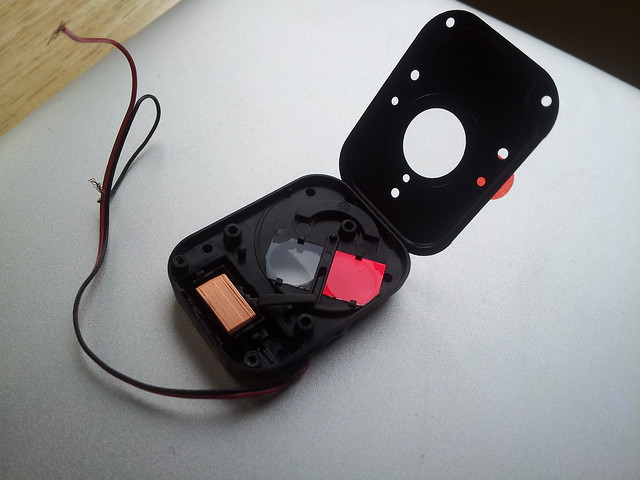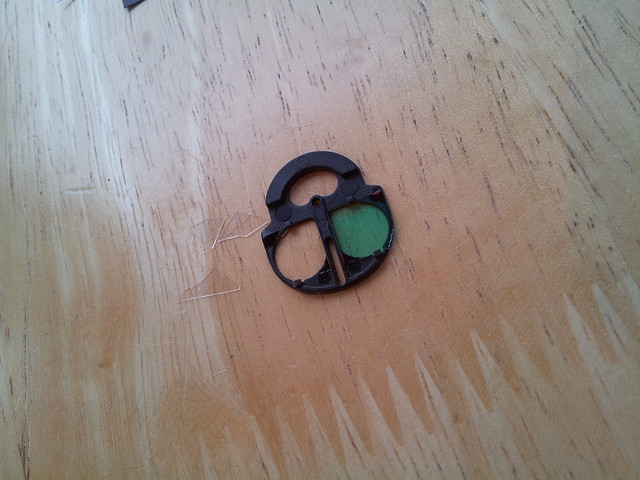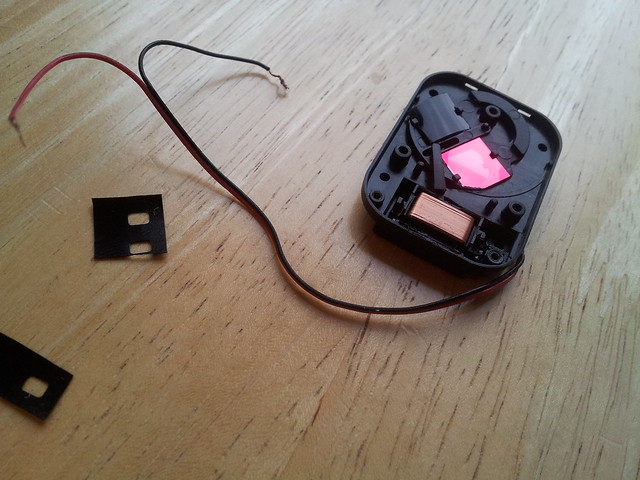The modification
it was really easy to open up the Leopard Imaging LI-IR650 filter switcher with a tiny philips screwdriver. Inside was a glass IR-CUT filter and a clear piece of glass. I broke out the clear glass and cut a piece of developed film to fit in its place. The developed film stays in without any glue.

My Results
This filter switcher is designed to switch at 12v, and works applying +12v or -12v briefly. It switches so fast that I wasn't able to catch it mid-switch at 30fps.
The filters aren't matched in density, so the camera has to spend some time re-adjusting its auto settings, but the filter switcher is more successful than I imagined.
Questions and next steps
Researching Filter Glass
I'd like to spec matched filters with equal density so that the camera can switch faster. Alternatively, getting full control of the camera in software so that the settings can be switched with the filters, but I think that's less elegant and likely to be camera-specific.
Connecting to a microcontroller
I have to look at the simplest circuit to allow the filter to be controlled with a microcontroller. I'll probably start with four diodes, but there is likely an IC that will do it cheaper.



6 Comments
are comments working?
Is this a question? Click here to post it to the Questions page.
Reply to this comment...
Log in to comment
Yes, finally I can comment! Were you able to flatten out the film filter which looks a bit buckled in the photo? The NIR image looks a little out of focus, but it also appears to be focused farther away than the matched VIS image. Could that be due to the buckled filter?
Is this a question? Click here to post it to the Questions page.
Reply to this comment...
Log in to comment
Sorry, yes, commenting was fixed today. Trying to enable email notifications for comments on the new site now.
Reply to this comment...
Log in to comment
Sorry, yes, commenting was fixed today. Trying to enable email notifications for comments on the new site now.
Reply to this comment...
Log in to comment
You're right that the filter is slightly curved. I was worried to glue it in flat in place, and didn't think it would be too much of an issue if there was a slight curve.
I wasn't able to fix the focus of the IR mode. I suspect its an optical issue, IR likely focuses differently than visible light. We saw the same issue of fuzzy IR images with point and shoots as well, and this may be a major case for using camera pairs. The sanm cam has a longer depth of field and I'd be interested to see if it works differently.
Reply to this comment...
Log in to comment
Hey Mathew - can you post some of your raw image pairs here so the GSoC students can have sample data and don't need to have the hardware if they don't want?
Is this a question? Click here to post it to the Questions page.
Reply to this comment...
Log in to comment
Login to comment.